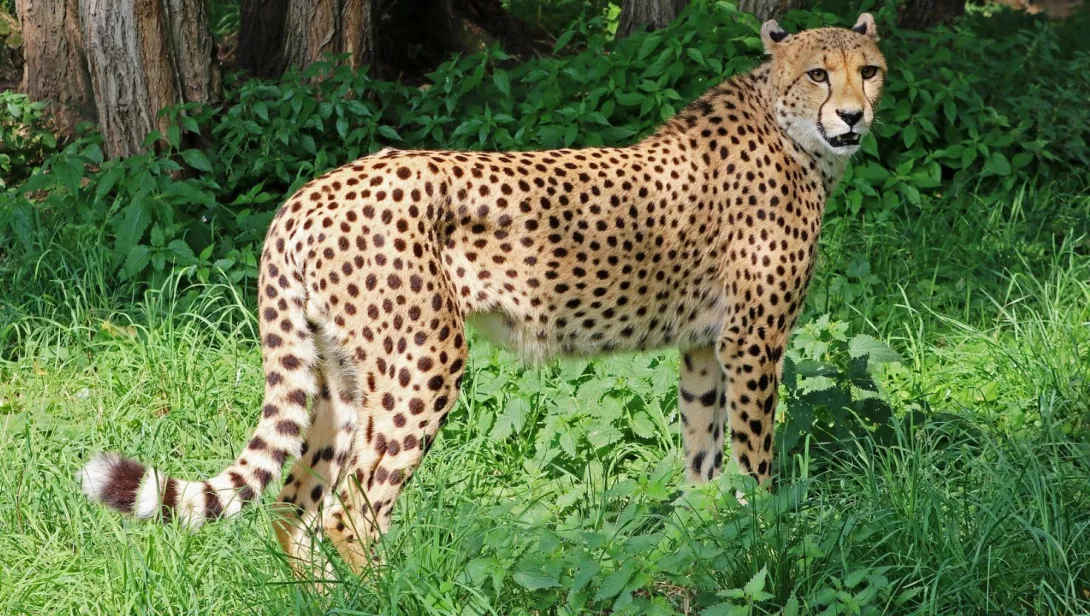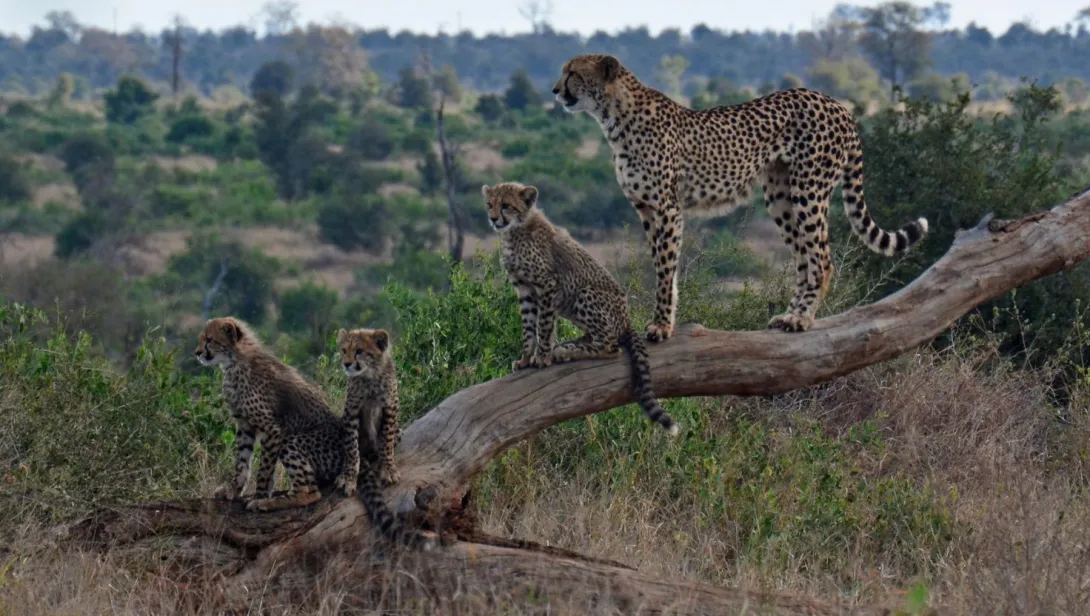Skip to main content
Introduction
- Cheetahs are the fastest land animals, capable of reaching speeds up to 70 mph (113 km/h).
- They belong to the Felidae family and are scientifically called Acinonyx jubatus.
- Cheetahs are known for their slender bodies, spotted coats, and distinctive black "tear marks" on their faces.
Physical Characteristics
- Cheetahs have a lightweight and aerodynamic body, designed for speed.
- They weigh between 75 to 140 pounds (34 to 64 kg) and have a body length of 3.5 to 4.5 feet (1.1 to 1.4 meters).
- Their long tail helps with balance and steering during high-speed chases.
- Cheetahs have non-retractable claws, which provide better grip while running.
Habitat and Distribution
- Cheetahs are primarily found in sub-Saharan Africa, with a small population in Iran (Asiatic cheetah).
- They inhabit savannas, grasslands, and open plains, where they can use their speed to hunt.
- Cheetahs are territorial and mark their territory with scent markings.
Diet and Hunting
- Cheetahs are carnivorous and primarily hunt small to medium-sized prey like gazelles, impalas, and hares.
- They rely on speed and stealth to catch their prey, often getting as close as possible before sprinting.
- A cheetah's hunt lasts less than a minute, and they can accelerate from 0 to 60 mph (0 to 97 km/h) in just 3 seconds.
- After a hunt, cheetahs need to rest for about 30 minutes before eating to avoid overheating.
Behavior and Communication
- Cheetahs are solitary animals, except for mothers with cubs or male coalitions.
- Male cheetahs often form coalitions of 2 to 3 individuals, usually brothers from the same litter.
- They communicate through vocalizations like purrs, chirps, and growls, as well as through body language.
- Cheetahs are diurnal, meaning they are most active during the day, especially in the early morning or late afternoon.
Reproduction and Lifespan
- Female cheetahs give birth to 3 to 5 cubs after a gestation period of about 90 to 95 days.
- Cheetah cubs are born with a mantle of fur on their backs, which helps camouflage them in the grass.
- Cubs stay with their mother for 18 to 24 months before becoming independent.
- Cheetahs have a lifespan of 10 to 12 years in the wild and up to 17 years in captivity.
Conservation Status
- Cheetahs are classified as Vulnerable on the IUCN Red List, with only about 7,000 individuals left in the wild.
- They are threatened by habitat loss, human-wildlife conflict, and poaching.
- Cheetahs have a low genetic diversity, making them more susceptible to diseases.
- Conservation efforts include habitat protection, anti-poaching measures, and breeding programs.
Unique Adaptations
- Cheetahs have large nasal passages and lungs to maximize oxygen intake during high-speed chases.
- Their spotted coat provides camouflage in the grasslands, helping them stalk prey.
- The black "tear marks" on their faces reduce glare from the sun and improve focus on prey.
- Cheetahs have a flexible spine and long legs, which allow for greater stride length during runs.
Cultural Significance
- Cheetahs have been revered in many cultures for their speed and grace.
- They were often kept as hunting companions by ancient Egyptian royalty and Indian maharajas.
- Cheetahs are featured in mythology, art, and literature as symbols of agility and power.
Fun Facts
- Cheetahs can cover 20 to 22 feet (6 to 7 meters) in a single stride while running.
- They cannot roar like lions or tigers but can purr like domestic cats.
- Cheetahs have a success rate of about 50% in hunts, making them highly efficient predators.
- They are not strong fighters and often lose their prey to larger predators like lions or hyenas.
- Cheetahs are excellent climbers and often use termite mounds or trees as lookout points.
- They are vulnerable to stress and require careful management in captivity.
Threats to Cheetahs
- Habitat loss due to agriculture and urbanization is a major threat to cheetahs.
- Human-wildlife conflict often results in cheetahs being killed by farmers protecting livestock.
- Illegal wildlife trade for pets or body parts further endangers cheetah populations.
- Climate change is altering their habitats, making it harder for them to find prey.
Conservation Efforts
- Protected areas and wildlife reserves have been established to safeguard cheetah habitats.
- Community-based conservation programs work to reduce human-wildlife conflict.
- Breeding programs in captivity aim to increase genetic diversity and reintroduce cheetahs into the wild.
- Global awareness campaigns highlight the importance of cheetah conservation and encourage public support.

